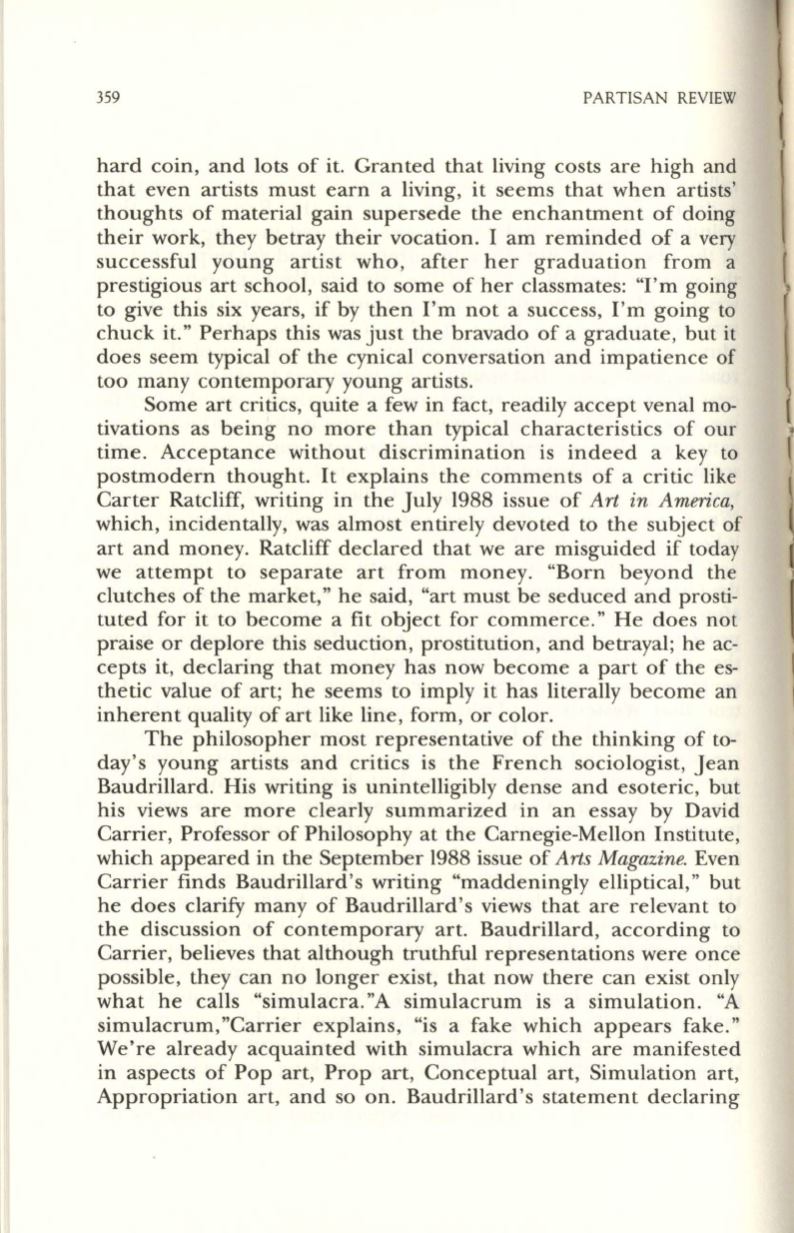
359
PARTISAN REVIEW
hard coin, and lots of it. Granted that living costs are high and
that even artists must earn a living, it seems that when artists'
thoughts of material gain supersede the enchantment of doing
t
their work, they betray their vocation. I am reminded of a very
successful young artist who, after her graduation from a
prestigious art school, said to some of her classmates: "I'm going
to give this six years, if by then I'm not a success, I'm going to
chuck it." Perhaps this was just the bravado of a graduate, but it
(
does seem typical of the cynical conversation and impatience of
too many contemporary young artists.
Some art critics, quite a few in fact, readily accept venal mo–
tivations as being no more than typical characteristics of our
time. Acceptance without discrimination is indeed a key to
postmodern thought. It explains the comments of a critic like
Carter Ratcliff, writing in the July 1988 issue of
Art in America,
which, incidentally, was almost entirely devoted to the subject of
art and money. Ratcliff declared that we are misguided if today
we attempt to separate art from money. "Born beyond the
clutches of the market, " he said, "art must be seduced and prosti-
tuted for it to become a fit object for commerce." He does not
praise or deplore this seduction, prostitution, and betrayal; he ac-
cepts it, declaring that money has now become a part of the es–
thetic value of art; he seems to imply it has literally become an
inherent quality of art like line, form, or color.
The philosopher most representative of the thinking of to–
day's young artists and critics is the French sociologist, Jean
Baudrillard. His writing is unintelligibly dense and esoteric, but
his views are more clearly summarized in an essay by David
Carrier, Professor of Philosophy at the Carnegie-Mellon Institute,
which appeared in the September 1988 issue of
Arts Magazine.
Even
Carrier finds Baudrillard's writing "maddeningly elliptical," but
he does clarify many of Baudrillard's views that are relevant to
the discussion of contemporary art. Baudrillard, according to
Carrier, believes that although truthful representations were once
possible, they can no longer exist, that now there can exist only
what he calls "simulacra. "A simulacrum is a simulation. "A
simulacrum,"Carrier explains, "is a fake which appears fake. "
We're already acquainted with simulacra which are manifested
in aspects of Pop art, Prop art, Conceptual art, Simulation art,
Appropriation art, and so on. Baudrillard's statement declaring


